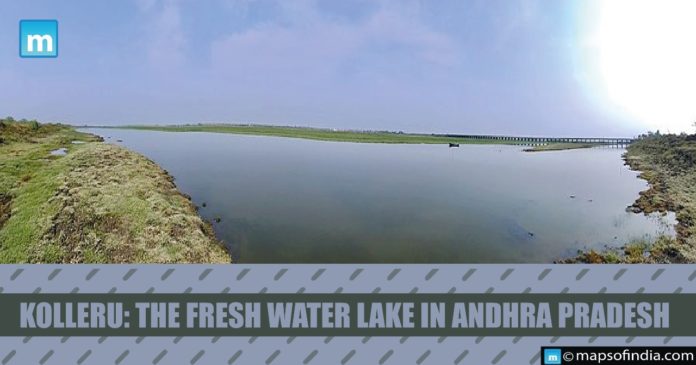The largest crucial freshwater lake in India is Kolleru lake, positioned inside Andhra Pradesh and the most critical shallow freshwater lake. It is about 15 kilometres away from Eluru and 65km from Rajamahendravaram and is placed in between Krishna and Godavari rivers.
The water in Kolleru lake starts from the seasonal Budameru and Tammileru streams. It is connected up to the Krishna and Godavari irrigation structures via over 67 fundamental and minor irrigation canals. This lake is a pinnacle traveller attraction. Many birds migrate here in winters, including cranes, ibis, and painted storks.
It has miles of 90,100 hectares of the ground region and an average intensity of 1.0 meters. Kolleru lake includes numerous fertile islets known as lankas; the numerous small ones are submerged during floods. The starting location of the unusual despair, which paperwork the mattress of the lake, is unknown, but it has become likely the result of an earthquake. Hence, many of the ancient villages went into the mattress of the lake because of floods and earthquakes.
Rich in plants and fauna, the lake had continuously attracted migratory birds from Northern Asia and jap Europe between October and March. Throughout this season, the lake used is visited utilizing an expected two million birds. The resident birds encompass:
• grey pelicans,
• painted storks
• clean ibises
• white ibises.
The migratory birds embody:
• purple-crested pochards,
• black-winged stilts,
• pied avocets,
• commonplace redshanks,
• Eurasian wigeons,
• gadwalls,
• greater flamingos,
• green-winged teals,
• northern pintails and
• northern shovelers.
Kolleru is one of the most critical wetlands in India, which helps hundreds of species of birds, together with the seriously endangered Spoon-billed Sandpiper. It serves as a foraging floor for citizens, further to migratory birds.
It is the biggest freshwater lake in India. The lake has been declared a bird sanctuary as it hosts several birds of various species. It moreover inhibits the growth of flowers and fauna. The first rate of the lake has been degraded due to water pollution, reducing the lake’s size. The muddy ground within the lake led to flooding. Water-keeping capability of the lake has additionally been decreased. Human activities like agricultural and company runout may additionally moreover affected adversely.
Several fish tanks have been excavated inside the wetland, changing the lake into a trifling drain. Apart from this, the farmers had converted the land use sample of the lake. This had numerous outcomes in terms of pollutants critical to even issues in consuming water for the local community. Constructing the industries and factories close to the lake is the reason for the lake’s pollution, and the government declared the operation Kolleru.
In 1982, the Andhra Pradesh government took the lake responsibility. It appointed a committee called the Kolleru Lake improvement Committee (KLDC), which invested a Rs 300-crore in the improvement plan of Kolleru. It’s additionally regarded for introducing a Kolleru lake development authority to test encroachments, alter and display pollutants, smooth the lake of weeds and use it as compost and uncooked cloth to provide biogas. The authorities venture many responsibilities to repair the honour of the lake.





